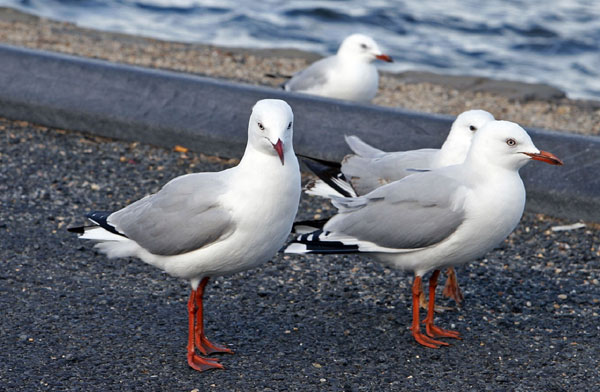Many animals from the South come to live in the Arctic
Russia's Arctic region is losing its ice covering and there are animals from the South to reside, the latest sign of global climate change.
A group of Russian scientists made the conclusion after conducting a three-month study in the Franz Josef Land archipelago, the islands located in Russia's far north with 191 islands covered by ice.

Seagull birds
The group of eight scientists, including experts in geomorphology, zoology and botany, drew a new map of the archipelago as well as listed rare species that first appeared here.
After surveying 42/191 islands of the archipelago, scientists noted that the ice cover in the area fell sharply since the last Soviet poll in 1957.
In addition, of about 20 species of birds identified, four species are not common here, especially two species of tailed gulls and long-tailed ducks. These birds are common in the South and it is clear that global warming has brought them to the North Pole.
Scientists have also collected some rare mosquitoes here, one of which has never been known until now. Final scientific conclusions will be made in 2013, when the research team finishes reviewing the collected data.
Many experts believe that melting the frozen land in Russia's vast northern territories could jeopardize the country's energy infrastructure, while the fertile lands in the south have may become unsuitable for agricultural activities.
- Interesting facts about animals living in the Arctic
- 8 animals do not eat and still live well
- Perennial ice in the Arctic is disappearing
- 10 animals live in an unexpected place
- Arctic animals call for help
- 6 most adaptable animals in arid desert
- How are Antarctic and Arctic different?
- Track the narwhal in the Arctic
- 7 animals are cold resistant under 0 ° C best on the planet
- Ancient creatures exist in the Arctic winter
- Arctic fox - beautiful animals eat their own feces
- Arctic dinosaurs are only 20 years old
 Animal 'suffering' after hibernation
Animal 'suffering' after hibernation Why do goats climb well?
Why do goats climb well? Scientists were surprised to see chimpanzees eating turtles
Scientists were surprised to see chimpanzees eating turtles Giant catfish died deadly due to drought in Thailand
Giant catfish died deadly due to drought in Thailand What is the giant trace of a suspected spacecraft crash in Antarctica?
What is the giant trace of a suspected spacecraft crash in Antarctica?  Scientists plan to bring back the Dodo bird, but how exactly will they do it?
Scientists plan to bring back the Dodo bird, but how exactly will they do it?  NASA robot tripped over rock on Mars, did it detect an earthquake?
NASA robot tripped over rock on Mars, did it detect an earthquake?  Can animals heal themselves?
Can animals heal themselves?  19 Vietnamese scientists in the world rankings 2024
19 Vietnamese scientists in the world rankings 2024  How have animals evolved to become special?
How have animals evolved to become special? 